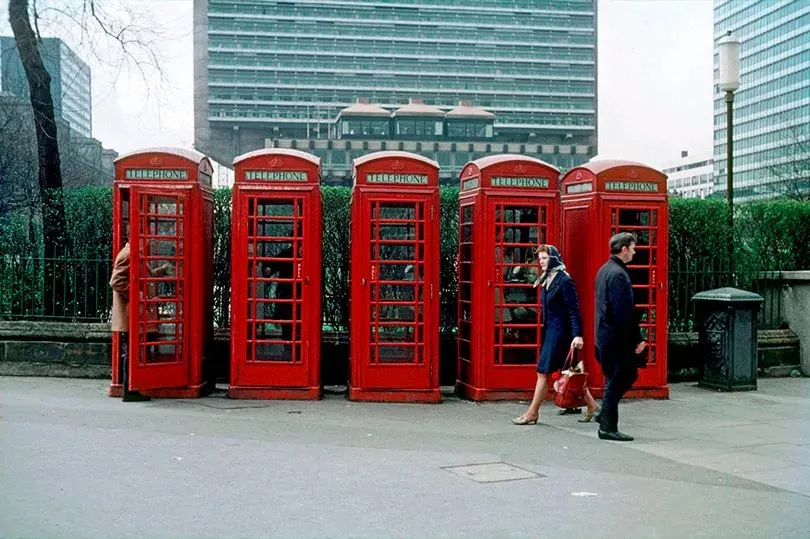The history of typing classes is intrinsically linked to the evolution of the typewriter, a machine that revolutionized written communication in the 19th century. As typewriters became more prevalent in offices and businesses in the early 20th century, the demand for proficient typists grew. This demand sparked the inception of typing classes, initially seen as vocational training primarily for women, who were entering the workforce in administrative roles.
These early classes focused on mastering the QWERTY keyboard layout, a design still used today, named for the first six letters in the top row. Instructors emphasized accuracy and speed, with students practicing on mechanical typewriters. These devices required considerable finger strength to press the keys and a carriage return lever to start a new line. The tactile and auditory feedback from these machines was a significant aspect of the learning process.
The Golden Age: Typing in Education and Business
By the mid-20th century, typing classes had become a staple in both high schools and business schools. The curriculum was rigorous, with a strong emphasis on touch typing, where typists learn to type without looking at the keys. This method was taught using various drills and exercises designed to build muscle memory in the fingers. Speed and accuracy tests were common, with the goal of reaching a certain number of words per minute, a standard still used to measure typing proficiency.
Typing classes were not just about the mechanical act of pressing keys. They also included lessons on proper posture, finger placement, and ergonomics to prevent strain injuries. Additionally, students learned the layout of business letters and documents, as typing was a critical skill for secretarial and clerical work.
Women employees of Westinghouse Company attending typewriting class at Westinghouse Technical Night School.

Typing class at Business High School
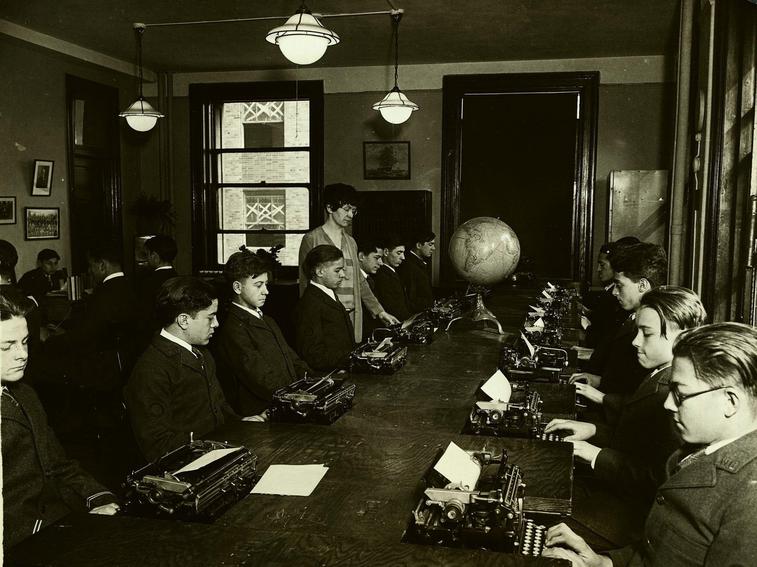
Typing class at a secretarial school in Birmingham, United Kingdom.

Students learning in a one-room schoolhouse, Wisconsin, early 1900s, including sewing and typing.

Typing Training Class.

Typewriting class at Hammersmith Commercial Institute, London, 1913.

Women’s typewriting class at Blackheath Road Evening Institute, London, 1914.

Typewriting class for London and North West Railway staff, circa 1917.

Blind teacher with blind pupils learning braille and typing, 1917.

Business course for convalescent patients, Camp Pike, Arkansas, 1917.

Typewriting class at L and N W Railway school for staff.

Typewriting class at Bow and Bromley Commercial Institute, London, 1924.

Boys from London Homepaper Offices in typewriting class, circa 1930.

World champion typist Albert Tangira teaching typing class on a beach, 1920s or 1930s.

Typing contest at Boston University to test efficiency with music.

Typewriting instruction at Southwestern University, Georgetown, 1931.

Outdoor typewriting class for secretaries, 1932.

Newspaper messenger boys typing to rhythm of a record, Keeley Street Evening Institute.

Students practicing typing in a class in Slough.

Typing class at Licensed Victuallers School, Slough, Buckinghamshire, December 1935.

Clerical skills practice in a classroom at Minnesota Business College, May 1936.

Typing class, mid to late 1930s.

Class learning to key telephone calls to automatic exchanges, Telephone House, Salford, February 1937.




High School Typing Class

Outdoor Typing Lesson at East London Day Continuation School, Clacton, 1940

Women Learning to Type with ‘Imperial’, 1944


Sister Imelda Overseeing Typing Class, 1952

Secretarial Skills Class, Crandon Institute, Montevideo, 1955

Girls in Typing Class, Late 1950s or Early 1960s

Woman’s Audio Typing Tested, 1961


#51 Touch Typing Class with Videomatic Tutor, UK, 1965

#52 Sister Marie Noel Instructing Personal Typing Class, 1965

Secondary School Typing Class, Birmingham, England, 1966


Unidentified Women Students in Typing Class, 1960s-1970s

Typing Class at St. John Villa Academy


Typing Course, Paris, 1975
University Students in Computer Laboratory


Learning to Type and Write Shorthand, United Kingdom, February 6, 1937












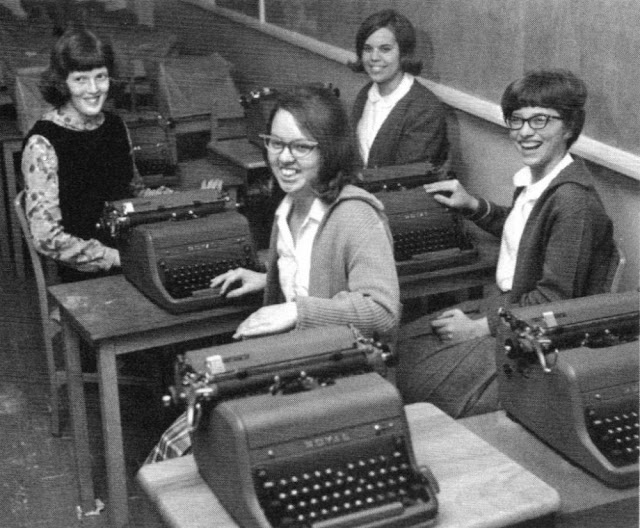










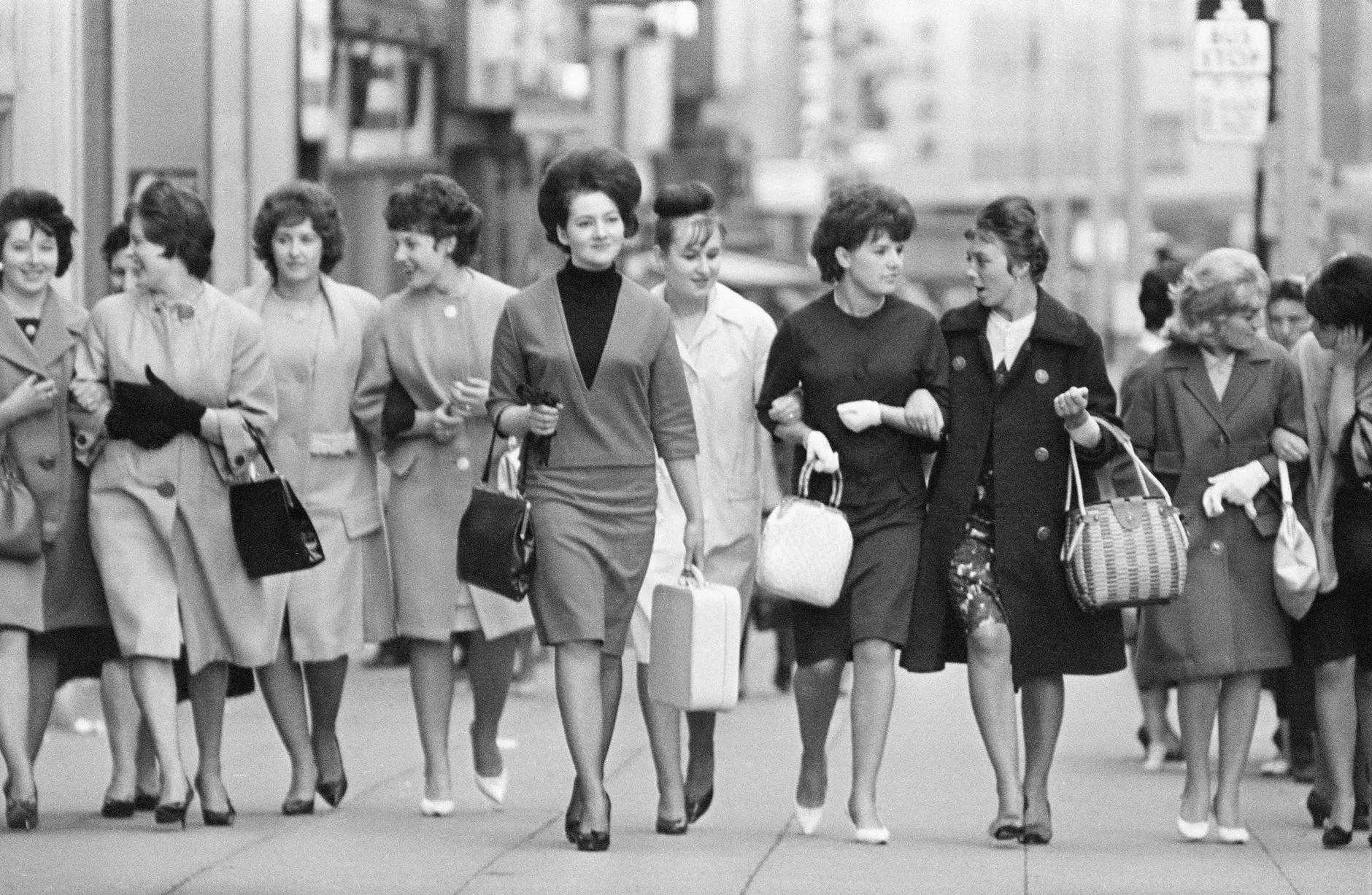
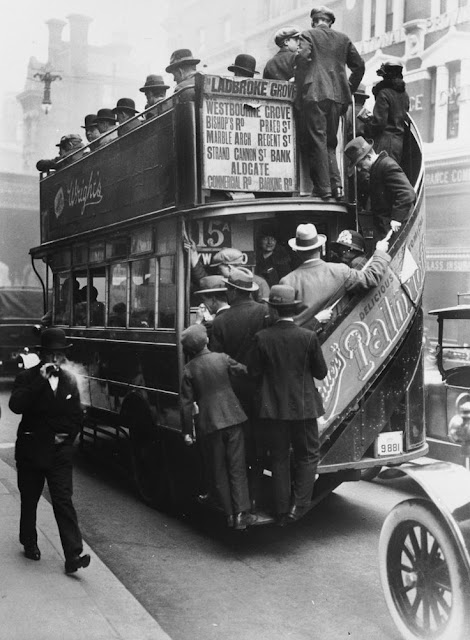
-1708851295.jpg)
